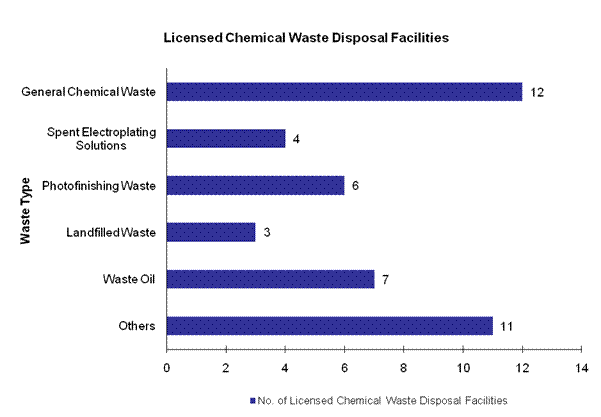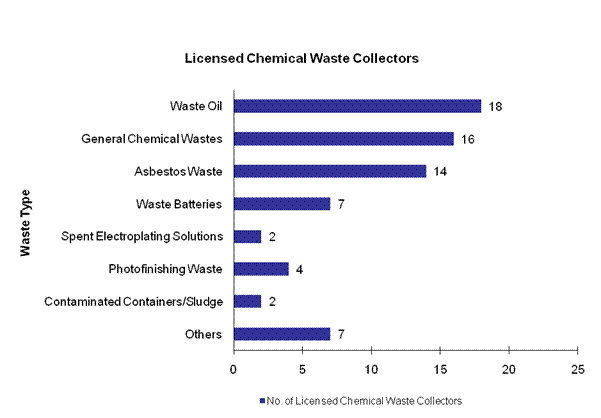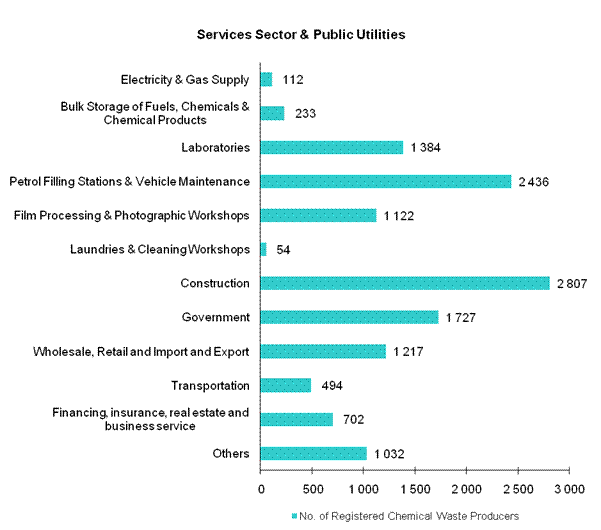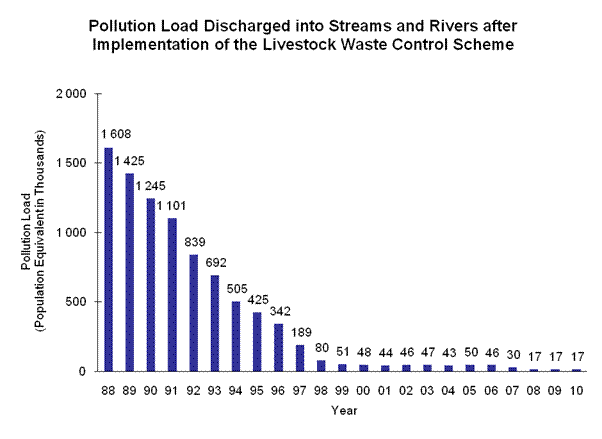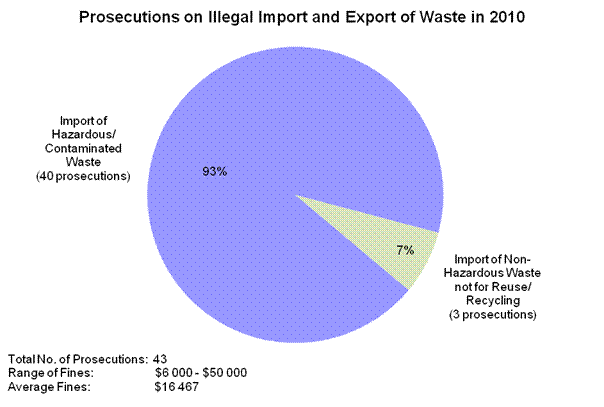Enforcement Activities and Statistics under the Waste Disposal Ordinance 2010
The Waste Disposal Ordinance provides for controls on the management and disposal of waste.
Chemical Waste
Producers of chemical waste have to be registered with the Environmental Protection Department (EPD), while waste collectors and disposal facilities have to be licensed. The movement of waste from its generation to its final disposal point is monitored by a trip ticket system, and 30 481 trip tickets were used in 2010.
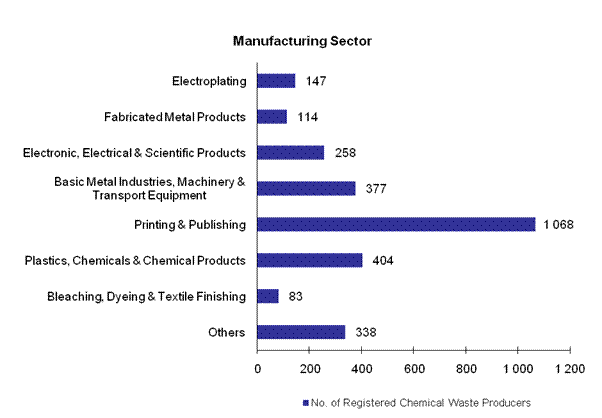
Livestock Waste
Under the Waste Disposal (Amendment) Ordinance effective on 1 July 1994, Livestock Waste Prohibition Areas were extended, and Restriction Areas were introduced. No new livestock farms are allowed in Restriction Areas, but existing livestock keeping activities can continue to operate. Since 1 July 1999, all treated livestock waste discharges have been required to meet a 50:50 standard [Biochemical Oxygen Demand (mg/L) : Suspended Solids (mg/L)]. About $946 million in financial aid has been paid to help affected farmers to date. About 90% of livestock waste is now disposed of in an environmentally acceptable manner as farmers have adopted appropriate livestock waste treatment and management measures.
Since the launching of two Voluntary Surrender Schemes in 2005 and 2006, the number of livestock farms has decreased by 79%, and the quantity of livestock waste arising has been reduced correspondingly by 46%. In addition, the buyout scheme for live poultry trade had been launched in 2008. This led to further reduction in the quantity of livestock farms and waste produced.
Livestock Waste Prohibition, Restriction and Control Areas
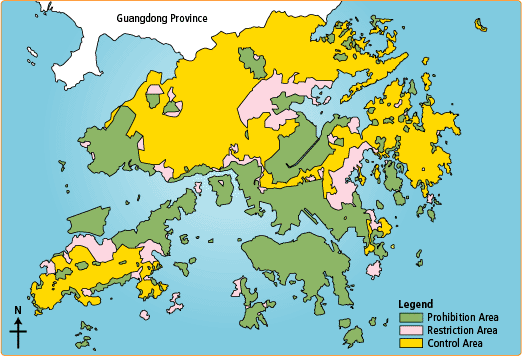
Import and Export of Waste
The import and export of waste has been controlled through permits since 1 September 1996. Any import or export of waste requires a permit issued by the EPD unless the wastes are uncontaminated recyclables and intended for a genuine recycling or re-use purpose.
In collaboration with the Customs and Excise Department and Marine Police, the EPD spot-checks waste consignments at various import and export control points and borders to deter illegal shipments of wastes. A surveillance is also kept at the strategic landfills against illegal disposal of imported waste.
Waste Import and Export Permit and Transit Consent Statistics in 2010
| No. of Permits Issued : |
5 |
| No. of New Waste Permit Applications Received : |
7 |
| No. of Shipments Effected under Permits: |
99 (1 399 tonnes) |
| No. of Transit Consents Issued: |
4 |
| No. of Transit Notifications Received : |
6 |
| No. of Shipments Effected under Transit Consents: |
1 (235 tonnes) |
